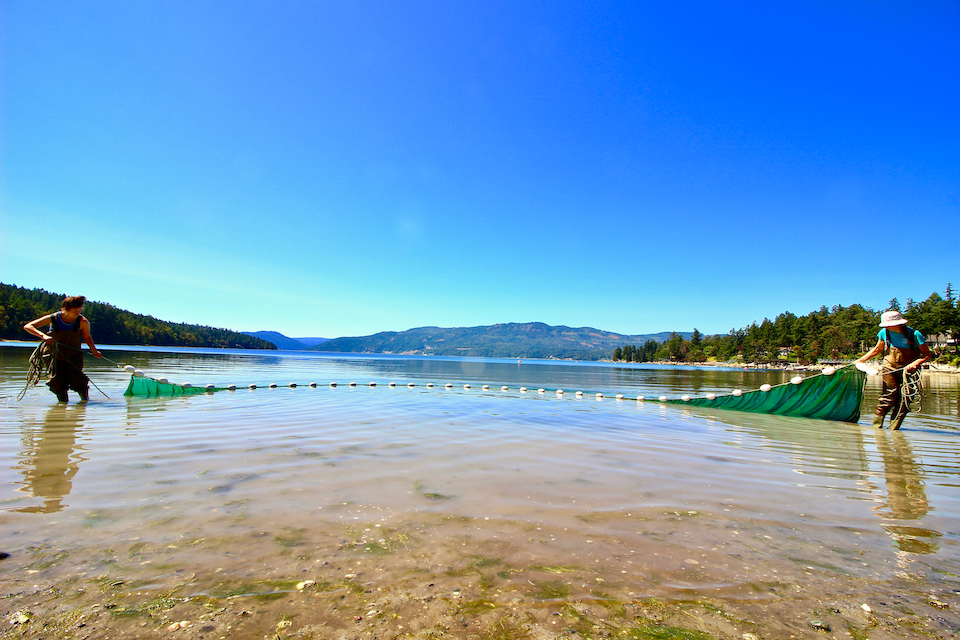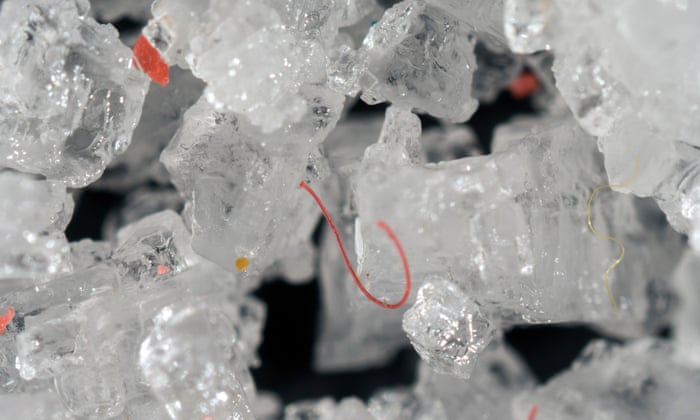Ingesting Environmental Microplastics
"The last thing I want to do is cause some sort of undue alarm over plastics."
"But even if we're considering what I would call a pretty limited literature, we're getting into hundreds of thousands [of particles] a year. That's a non-trivial dose."
"If you tell people more facts surrounding micro-plastics in the ocean, they don't seem perturbed by it. But if you tell them there's a small piece of plastic in their food, they're really connected to that."
"I would say the likelihood that it's an underestimate of your total [plastic] consumption over the year is pretty high."
Kieran Cox, biologist, University of Victoria
 |
| Hailey Davies and Wendy Fleming, contributors to the UVic study on human consumption of microplastics using a seine fishing net in Sidney, BC. Credit: Kieran Cox. |
Minuscule plastic particles in your food sound absurdly fantastic? Unappealing, certainly. But that's precisely what a new study, published in the journal Environmental Science and Technology has concluded, based on investigating the results of a growing body of research. What Kieran Cox emphasizes is what else his study demonstrates; how little is actually known of the extent, let alone the health impact of microplastics ending up in people's bodies.
Microplastics are produced when all manner of items made of plastic break down in the environment, producing pieces from the size of a grain of rice, down to microscopic bits whose prevalence in the atmosphere we are oblivious to. Microplastics are everywhere. Swirling masses of plastic have been seen in the world's oceans, piled up on land, and circulating in the very air we breathe. This recently published study is the first of its kind, meant to estimate the amount of these minuscule bits that end up in humans.
 |
| Tiny fragments and filaments of plastic in table salt crystals. Photograph: Paulo Oliveira/Alamy |
They next made an estimate of how much of these items would be ingested by an average North American, bearing in mind American food guidelines, enabling them to calculate the plastics dose such food items introduce as being between 39,000 to 52,000 microplastics particles annually consumed by each and every individual. At the low end of the spectrum were young girls, and at the high end, adult males.
 |
| In this file photo taken on September 17, 2015 shows a Chinese labourer sorting out plastic bottles for recycling in Dong Xiao Kou village, on the outskirt of Beijing. |
That estimate, cautions Dr. Cox, takes into account only about 15 percent of average caloric intake, so the actual numbers are likely to be higher. The big mystery is that the health impacts of microplastics ingestion are unknown. Yet some plastics such as BPA which disrupts endocrine function, are known to be harmful and evidence exists they can carry other toxins.
All of which simply serves to remind us of how much we don't know, and how needful it is that more research into the matter is urgently required.
 |
| A blue rectangular piece of microplastic is visible on a researcher's finger in Tacoma, Wash. New research suggests North Americans eat, drink and inhale tens of thousands of tiny plastic particles every year. |
Labels: Health, Microplastics, Research

0 Comments:
Post a Comment
<< Home